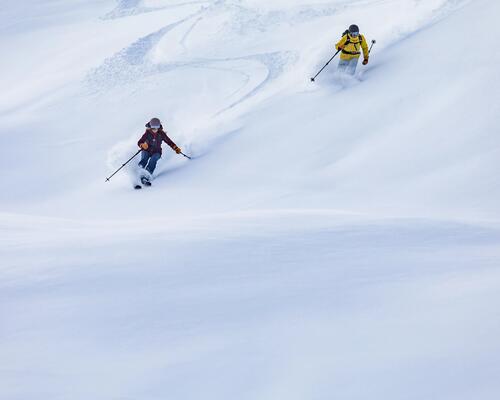Interview with cédric bonnivard
freeride ski instructor at la clusaz
Hello, could you introduce yourself for us?
Hi, I've been a ski and snowboarding instructor for 18 years, and a fitness trainer at the Pôle France ski centre in Albertville. I handle the Freeride Generation Group at La Clusaz which I founded with Vincent Michaud four years ago.
Who can try Freeride? Can anyone go off-piste?
In my opinion, anyone can go off-piste, but only if you do it in the right conditions. If you're sure of your technique and your skiing level, you can easily adapt to the kit, the snow quality on the slopes, the terrain and the conditions on the day, and react as needed in the event of any issues. However, if you're not sure of your level, head out with a guide or an instructor who will take you onto an easy route, such as piste edges, which are the ideal place for testing your skills and learning to master different snow types.
How to properly assess your level and skiing technique
Start off gently with easy off-piste courses, on the edge of the pistes. The snow isn't packed and the presence of trees can be a great way of learning to quickly change your trajectory, which is a good exercise.




